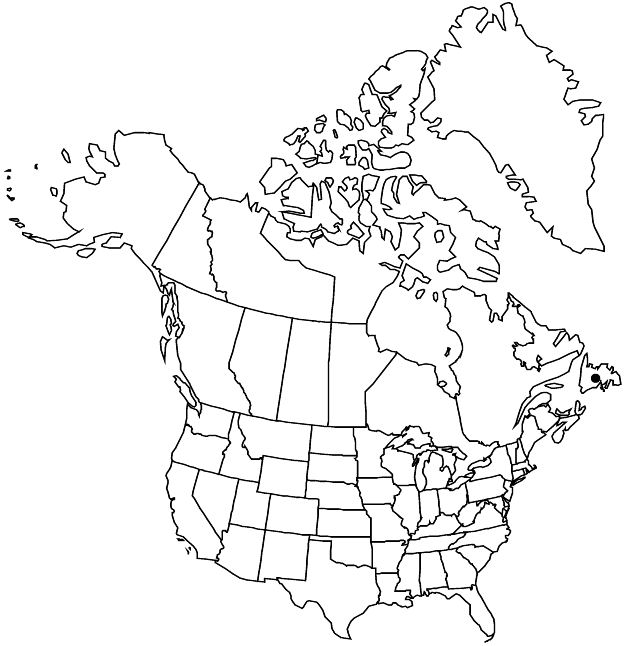Potentilla sterilis
Fl. N. Mitt.-Deutschland ed. 4, 112. 1858.
Basal leaves: petiole 2–7(–17) cm, long hairs common to abundant, 1–2 mm; central leaflets (0.8–)1.5–3(–5) × (0.6–)1–2(–3) cm, straight hairs common to abundant (sparser adaxially), glands absent or sparse. Flowers: epicalyx bractlets ± lanceolate, 2.5–4 × 0.8–1.3 mm; sepals 4–6.5 mm, apex ± acute; petals 4–7 × 3–5 mm; filaments 0.8–2 mm, anthers 0.6–0.9 mm; carpels numerous. Achenes 1.5 mm. 2n = 28 (Europe).
Phenology: Flowering spring.
Habitat: Dry to moist, often rocky slopes
Elevation: 0 m
Distribution

Nfld. and Labr. (Nfld.), Europe.
Discussion
Potentilla sterilis was collected from the coast of Newfoundland in 1928 (A. M. Ayre s.n., GH); no recent documentation of occurrence is known (J. Maunder, pers. comm. to L. Brouillet). Although previously treated as native (M. L. Fernald 1950; E. Hultén and M. Fries 1986), this status has been challenged (for example, A. Kurtto et al. in J. Jalas et al. 1972+, vol. 13). According to H. A. Gleason and A. Cronquist (1991), the species is also rarely introduced in the eastern United States; no vouchers have been seen.
Potentilla sterilis is superficially similar to strawberry (Fragaria) but lacks the fleshy fruit; other differences include stolon structure, anther morphology, and style length and attachment.
Selected References
None.